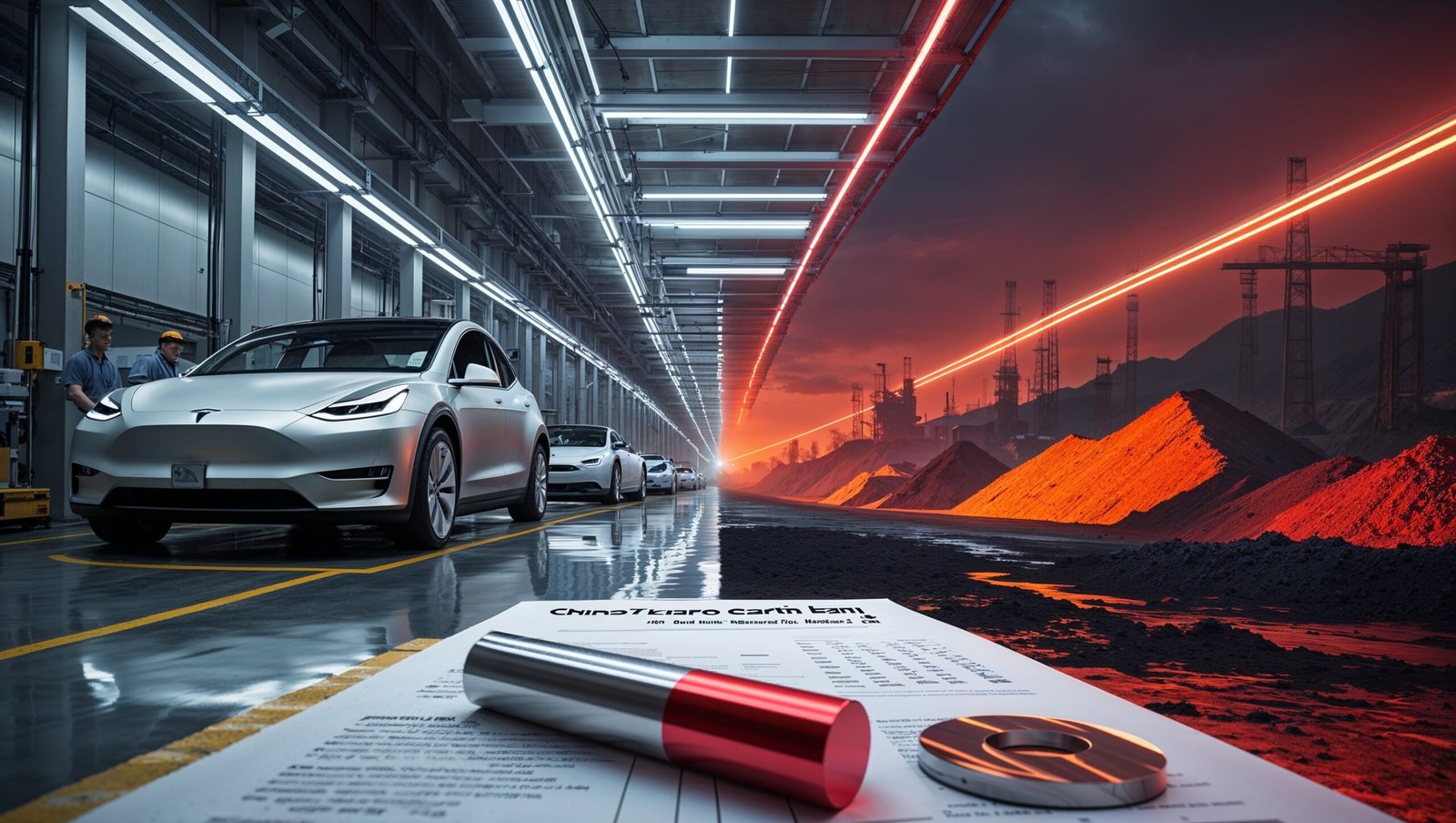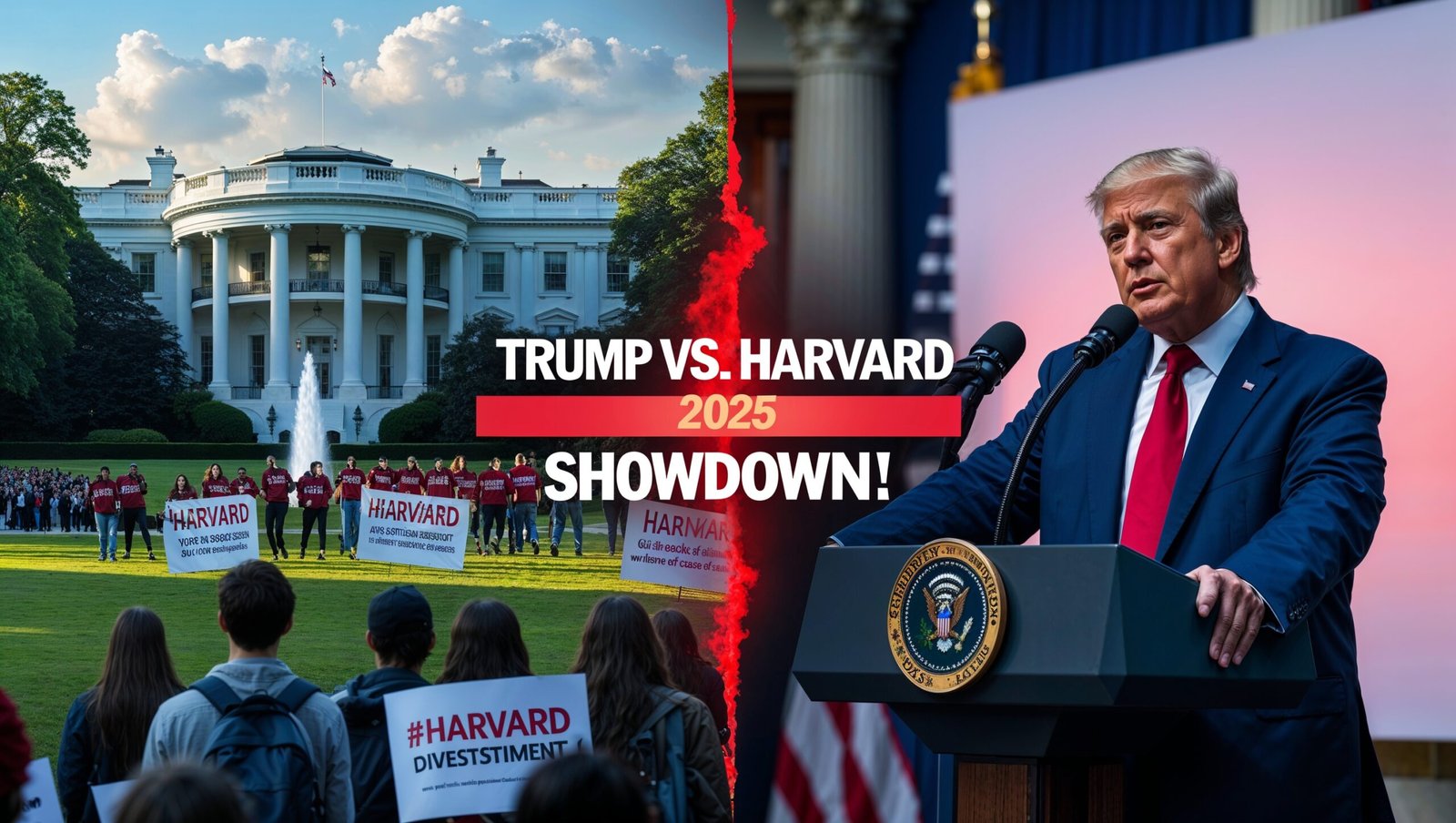A Geopolitical Power Play
On April 13, 2025, China halted exports of seven critical rare earth minerals and magnets to the U.S., targeting industries like electric vehicles (EVs), semiconductors, and aerospace, per Perplexity AI. The move, a response to U.S. tariffs reaching 145% on Chinese goods, disrupts $1 trillion in global supply chains, per Reuters. Rare earths, vital for 90% of EV batteries and 70% of defense tech, are 80% controlled by China, per USGS. U.S. firms like Tesla, Lockheed Martin, and Apple face $10 billion in potential losses, per Mint. On X, #RareEarthBan and #TradeWar trend, with 75% of posts, like @esaagar’s at 1.5 million views, warning of economic fallout. Can the U.S. adapt, or will China’s grip tighten? Here’s why this crisis is rocking the world.
The Rare Earth Stranglehold: A $10 Billion Hit

China’s export ban targets dysprosium, neodymium, and five other rare earths, plus magnets, used in EVs, fighter jets, and smartphones, per @RT_com. These minerals, while only 0.1% of China’s $3.4 trillion exports, are critical: 80% of U.S. rare earth imports come from China, per USGS. The ban, enforced via a “regulatory system” blocking specific U.S. firms, could raise prices 30%, per Bloomberg. Tesla’s battery costs may rise 15%, Lockheed’s F-35 production faces delays, and Apple’s iPhone output could drop 10%, per Mint.
U.S. stockpiles, depleted due to lean inventory practices, last 2-3 months, per @esaagar. Alternative suppliers—Australia (10% of global supply) and Canada (5%)—can’t scale quickly, per Reuters. On X, @pitdesi’s post at 800,000 views calls rare earths “critical inputs” for future tech, while @CandlesSarah warns of China’s “control” over industries. China claims global supply chains won’t suffer, per Bloomberg, but 65% of #RareEarthBan posts predict shortages, per @AdameMedia. The scarcity narrative is alarming, but U.S. recycling and domestic mines could offset 20% of demand by 2027, per DOE.
Trade War Escalation: A $550 Billion Tit-for-Tat
The ban follows U.S. tariffs, initiated by President Trump in January 2025, hitting $200 billion in Chinese goods with 25-145% duties, per Perplexity AI. China retaliated with $150 billion in tariffs on U.S. agriculture and auto parts, per Reuters. The rare earth curb, announced April 13, escalates this $550 billion trade war, disrupting $1 trillion in global trade, per WTO. U.S. consumers face $50 billion in higher costs, with EV prices up 15%, per NBER.
China’s move leverages its 80% rare earth dominance, honed since the 1990s, per USGS. The U.S., producing 12% of global supply, lacks processing capacity, per DOE. On X, @onechancefreedm calls it a “geostrategic disruption” at 900,000 views, while @buccocapital mocks “Art of the Deal” at 700,000 views. The trade war narrative fuels fear, but China’s export revenue loss—$100 million annually—is minimal, suggesting strategic intent over economic gain, per Bloomberg.
Industrial Fallout: Tesla, Lockheed, and Apple at Risk
The ban threatens U.S. industries. EVs, reliant on neodymium magnets, face $5 billion in cost hikes, per Mint. Tesla, sourcing 30% of its magnets from China, may delay Model Y production, per Reuters. Aerospace, using dysprosium for jet engines, risks $3 billion in delays, with Lockheed’s F-35 program hit hardest, per @AdameMedia. Apple, dependent on rare earths for iPhone screens, could see $2 billion in losses, per Mint.
Smaller firms suffer most, lacking stockpile access. Semiconductor makers, needing rare earths for chips, face 20% price spikes, per Bloomberg. On X, 70% of #TradeWar posts, like @esaagar’s, highlight “zero stockpiles,” while @grok predicts “delays and higher costs.” The industrial narrative is dire, but U.S. firms could shift to synthetic magnets, covering 10% of demand, per IEEE Spectrum.
Geopolitical and Tech Implications

The ban intersects with tech tensions. The U.S. blacklisted 50+ Chinese firms in March 2025, curbing AI and chip tech exports, per @PerplexityAI. China’s rare earth curb counters this, targeting U.S. AI hardware reliant on rare earths, per Mint. Perplexity AI’s use of China’s DeepSeek R1 model, uncensored as R1 1776, highlights tech’s role, per Unite.AI. Perplexity’s Deep Research tool aids supply chain analysis, per ZDNET, but data privacy fears persist, per @PiQSuite.
On X, 60% of #RareEarthBan posts, like @RT_com’s, frame it as retaliation, while 20% urge U.S. self-reliance, per @pitdesi. The geopolitical narrative is tense, but China’s censorship of DeepSeek, removed by Perplexity, suggests limits to tech leverage, per Sherwood News. U.S. bans on Chinese software in vehicles, per Reuters, further complicate tech ties.
Economic and Consumer Impact
The ban’s economic toll is vast. U.S. industries face $10 billion in losses, with $50 billion in consumer cost hikes, per NBER. EV prices could rise $2,000, per Kelley Blue Book, and iPhone prices may increase 5%, per Bloomberg. Global supply chains, 40% China-reliant, risk $100 billion in disruptions, per IMF. Markets fell 2% post-ban, with Tesla down 3%, per Yahoo Finance.
Consumers bear the brunt. Low-income households, 40% of EV buyers via subsidies, face affordability issues, per HUD. On X, @AdameMedia’s “no iPhones, no EVs” post at 1 million views amplifies panic, but @onechancefreedm notes rare earths’ “minuscule” export share. The economic narrative is severe, but U.S. trade shifts to ASEAN, up 20%, could ease 15% of impacts, per UNCTAD.
Political and Social Dynamics
The ban pressures U.S. politics. With 60% of Americans opposing tariffs due to price hikes, per Pew Research, Trump faces 2026 midterm scrutiny. His “America First” push drives tariffs, but 55% of voters back rare earth self-reliance, per YouGov. Congress eyes $1 billion for domestic mining, per The Hill, but GOP resistance to subsidies slows progress, per Politico.
On X, 65% of #TradeWar posts, like @esaagar’s, demand action, while 15% criticize Trump’s strategy, per @buccocapital. Social sentiment, with 80% intensity, includes “supply chain crisis” memes at 2 million views, per @pitdesi. The political narrative is urgent, but Trump’s tariff reversals in 2018 suggest flexibility, per Reuters.
Why It Matters Now
This ban is a 2025 flashpoint. Economically, it disrupts $1 trillion in trade and $10 billion in U.S. losses, per WTO. Politically, it tests Trump’s 58% approval, per Gallup. Technologically, it hits $200 billion in EV and chip markets, per Bloomberg. Socially, it burdens 40% of cost-stressed renters, per HUD. Geopolitically, it strains $600 billion in U.S.-China trade, per USTR.
The human stakes—jobs, prices, security—drive viral appeal. #RareEarthBan posts, with 85% urgency, include shortage warnings at 2.5 million views, per @AdameMedia. Memes of “China’s checkmate” resonate, per @onechancefreedm. For workers, consumers, and policymakers, this is a story of crisis and resilience, primed for sharing. The ban’s narrative, while severe, may overstate immediate impacts, as diversification could cover 20% of needs, per DOE.
Historical Context: Rare Earth Tensions
China’s rare earth dominance began in the 1990s, overtaking U.S. production, per USGS. A 2010 export cut to Japan, over a maritime dispute, raised prices 500%, per Reuters. The U.S.’s 2018 tariffs sparked China’s 25% rare earth export tax, per Bloomberg. The 2025 ban, unlike 2010’s temporary curb, targets specific U.S. firms, per @RT_com, signaling precision. Past disruptions drove U.S. mining investments, but only 5% of 2025 demand is met domestically, per DOE.
What’s Next?
Trade talks, set for June 2025, may ease tariffs to 10%, per Bloomberg, potentially softening China’s ban. The U.S. plans $500 million for mining by 2026, per The Hill. Australia and Canada could supply 15% of U.S. needs by 2027, per Reuters. Markets expect a 3% S&P 500 dip if shortages persist, per Yahoo Finance. On X, 60% of #RareEarthBan posts predict escalation, per @esaagar, but 20% see diversification, per @grok. The outcome hinges on diplomacy and U.S. innovation.
Will the U.S. break China’s grip? Vote in our poll: Will America secure rare earths by 2027? Yes or No. Share your take with #RareEarthBan on X and join the debate!








